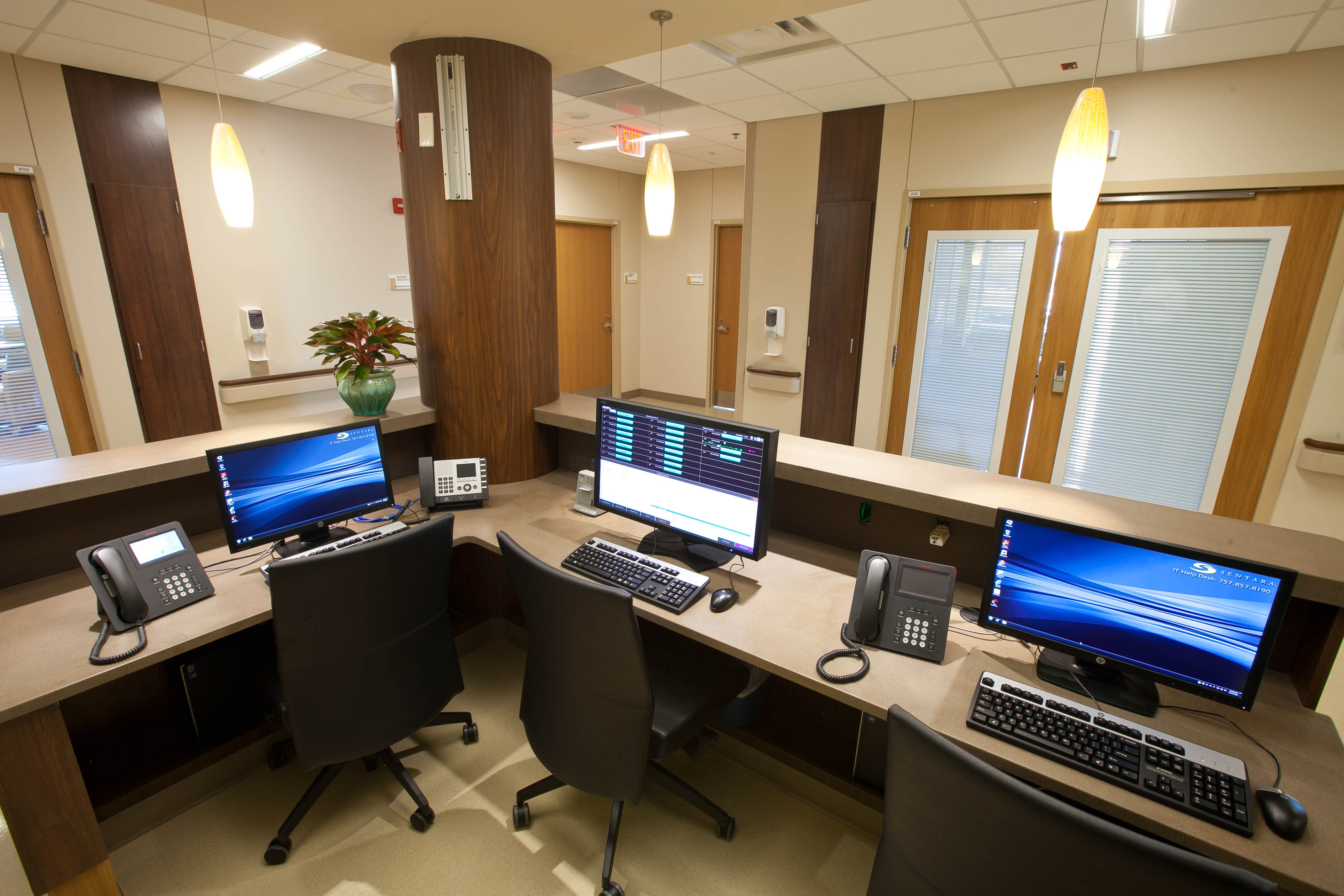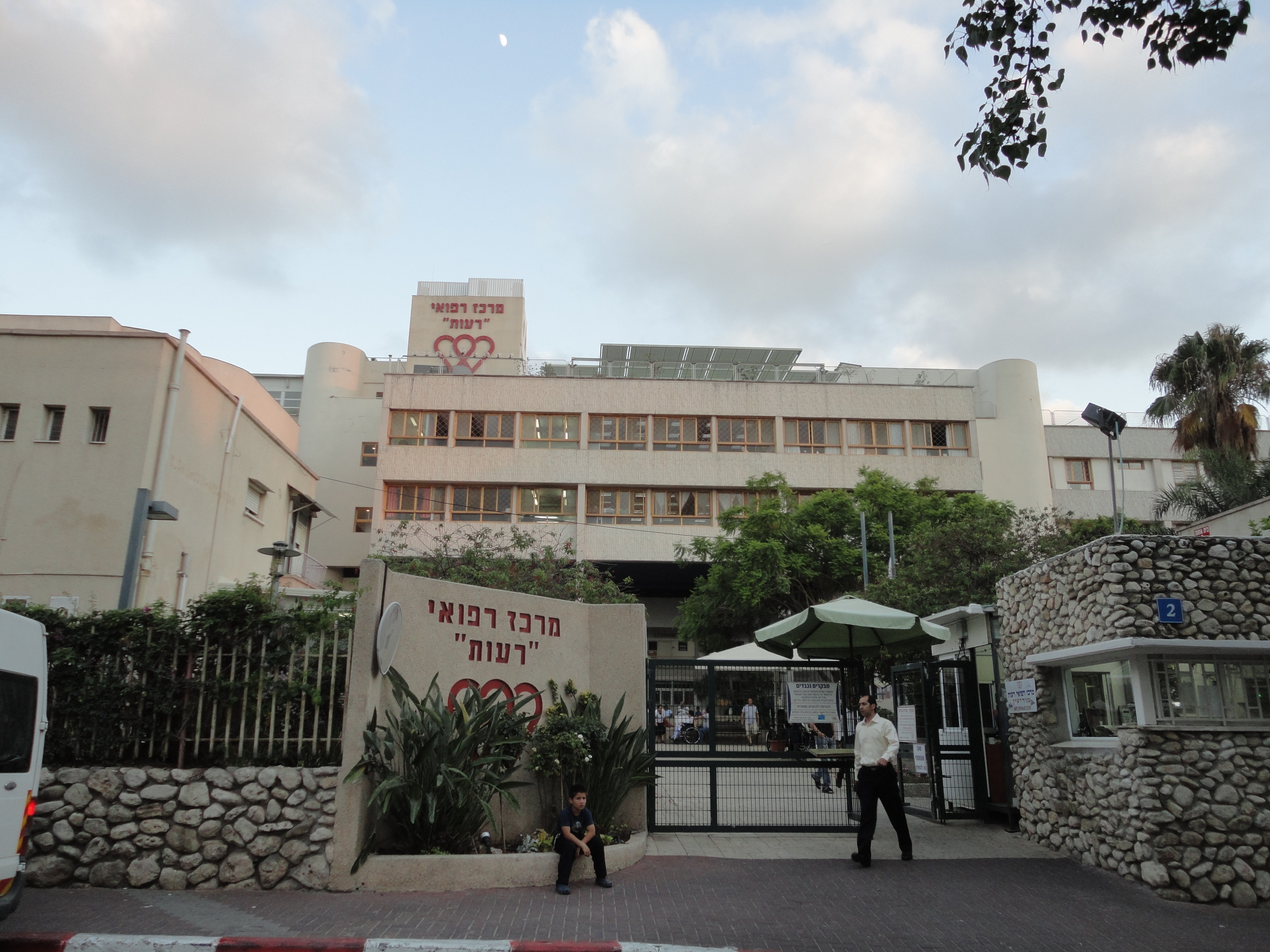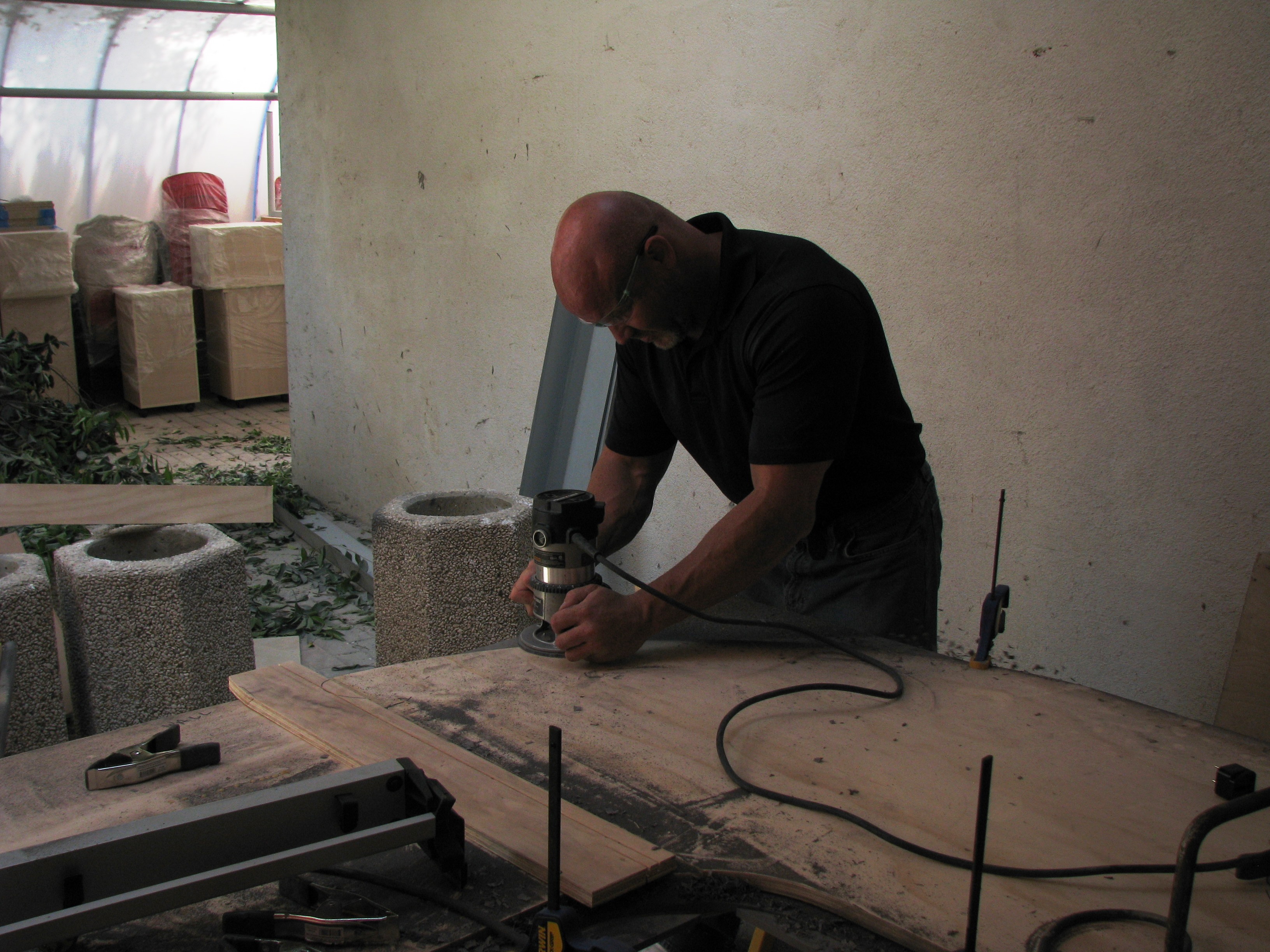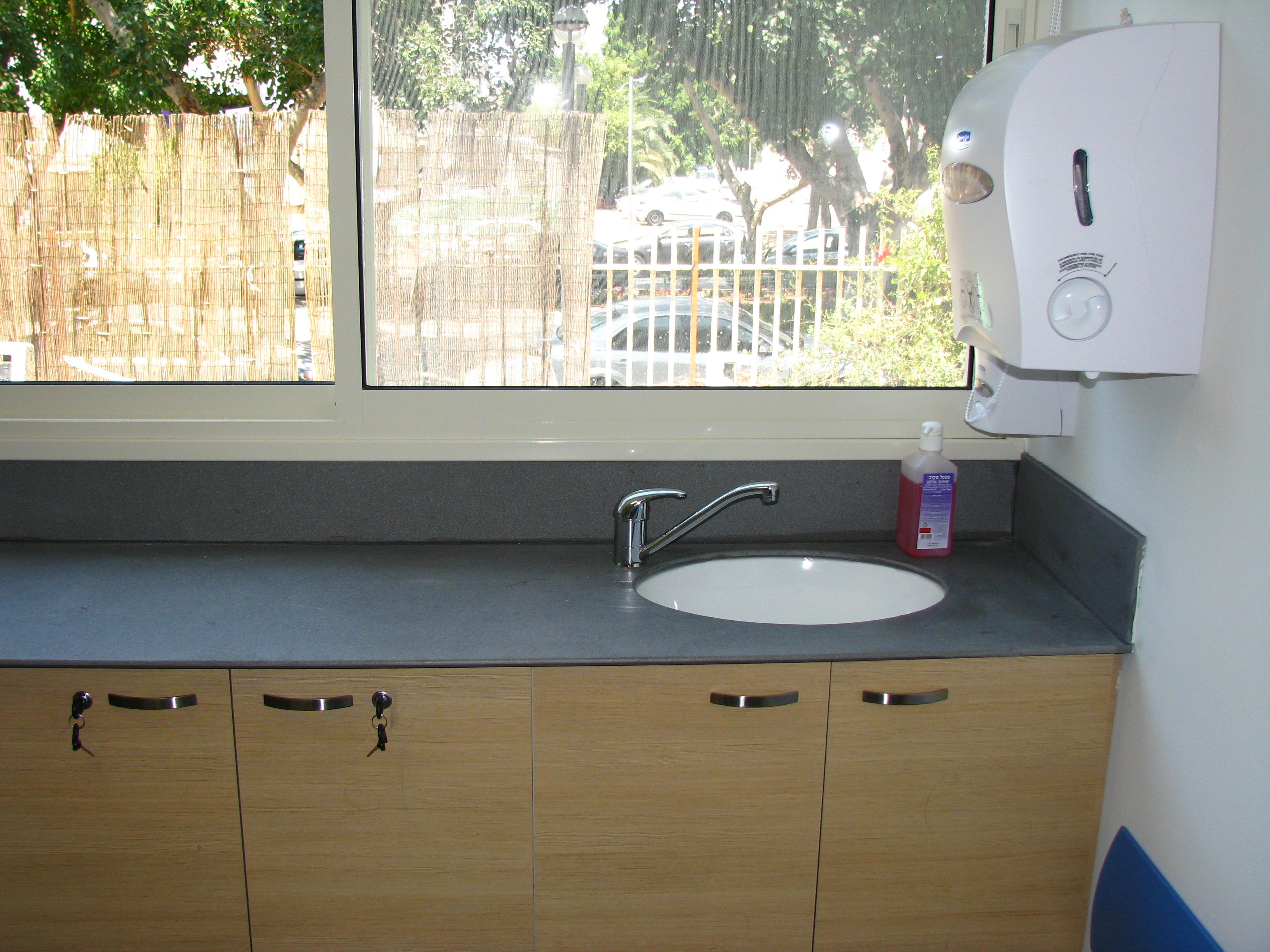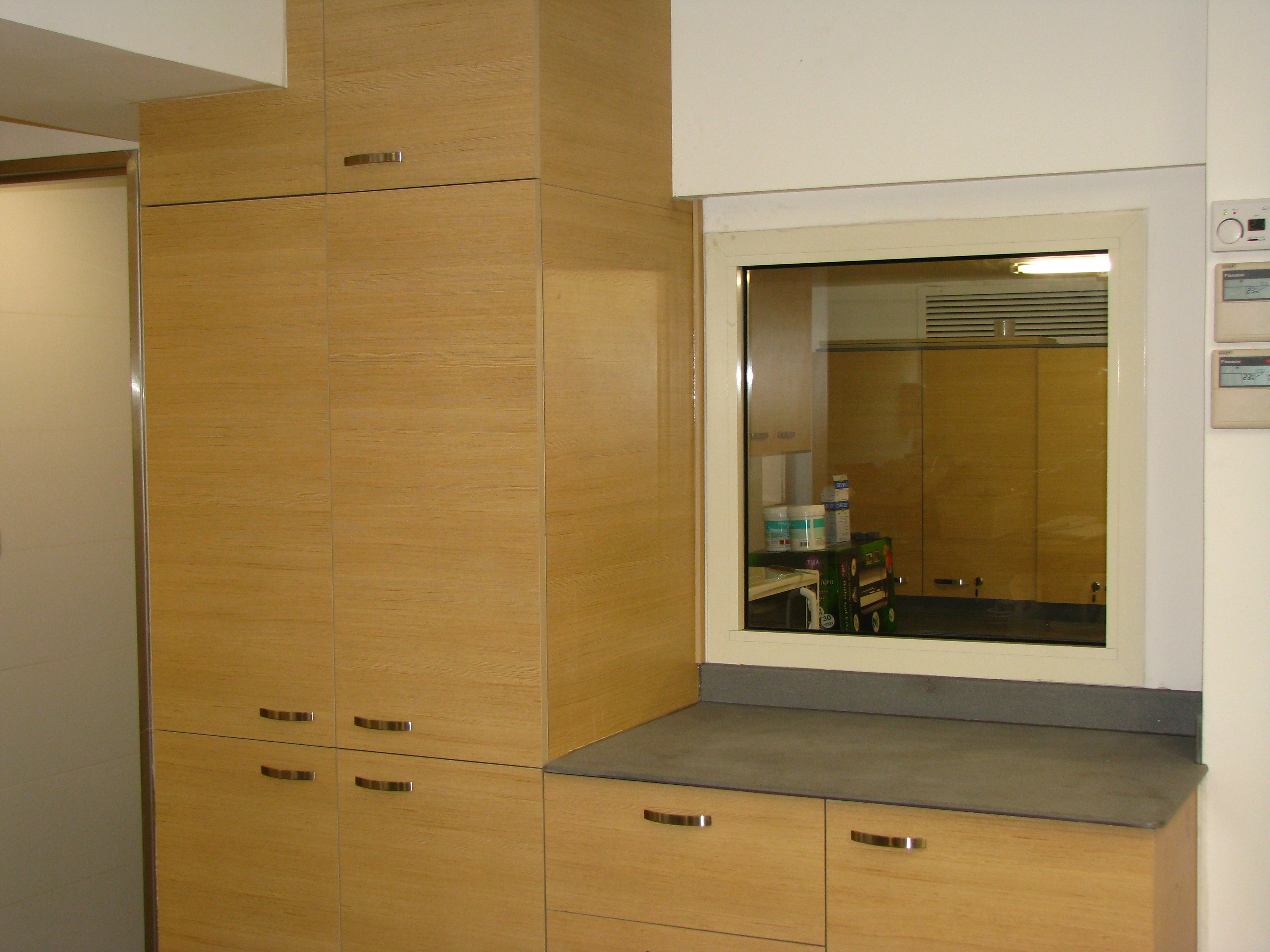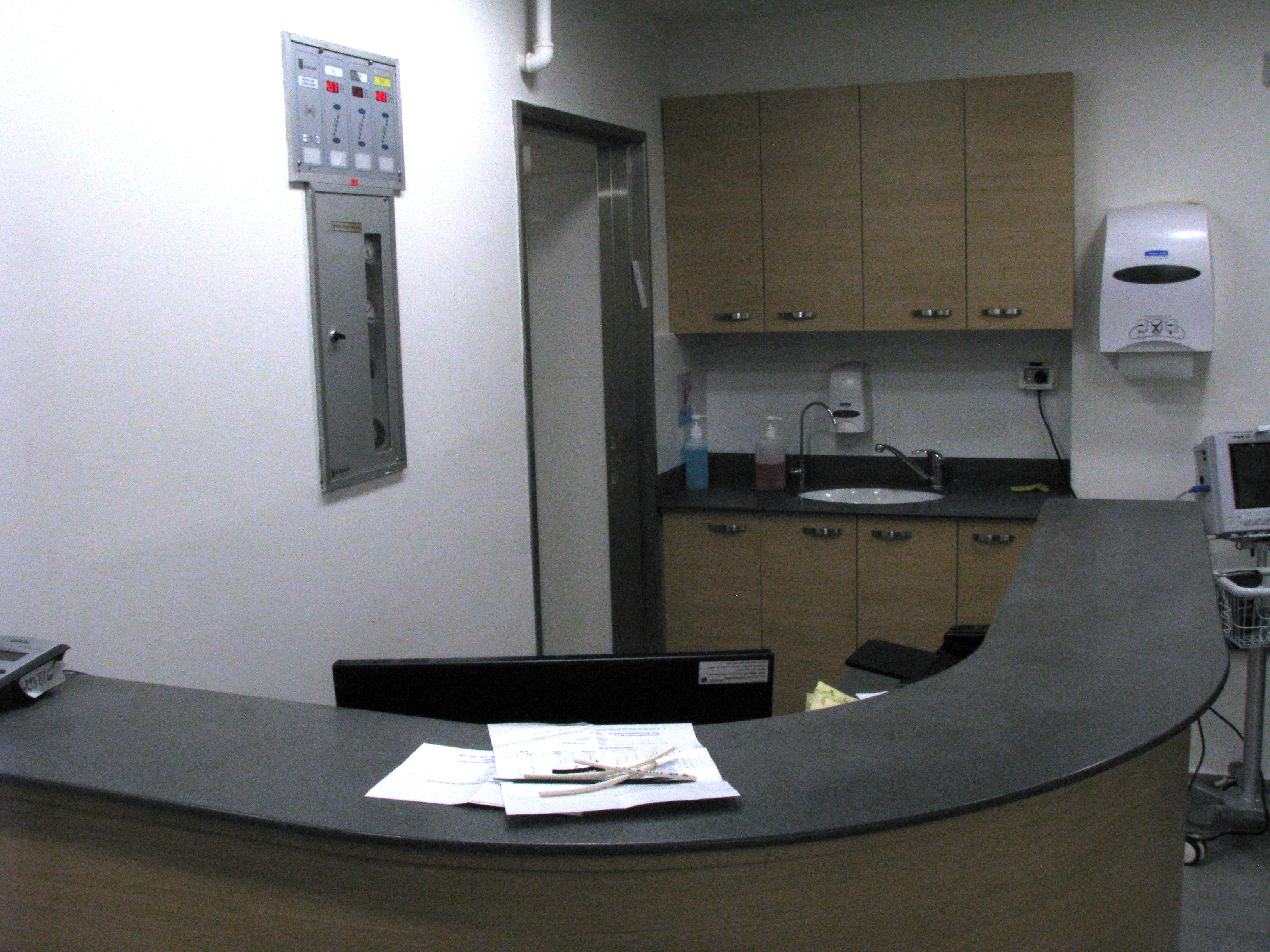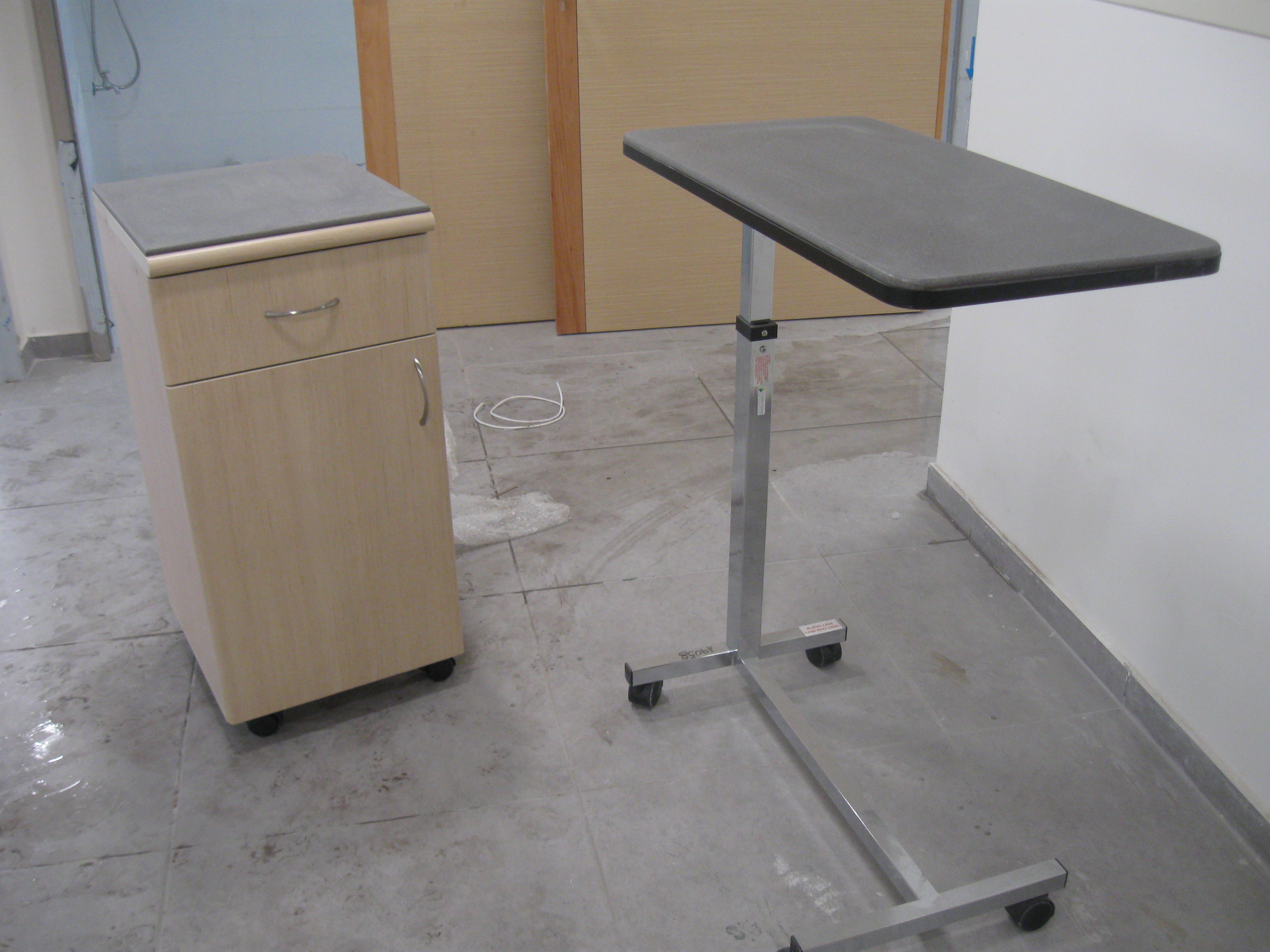Countertops Magazine Archive
Battling Germs with Surfacing Material
An inside look at an Israeli hospital project featuring a new anti-microbial surface
Editor’s note: EOS Surfaces has developed a new hard surfacing product, Antimicrobial Cupron Enhanced EOS Surface™, which has copper particulate embedded throughout the entire sheet at the time of manufacture. The EPA registered for public health claims that this surface kills greater than 99.9 percent of bacteria* within two hours of exposure and continues to kill 99 percent even after recontamination. This potential impact on the healthcare industry, which is constantly looking for ways to combat secondary infections, is significant. Sentara Healthcare in Virginia just opened a 129-bed tower in Norfolk with nearly 8,000 square feet of the surface. In January 2014, they will launch the world’s largest known clinical trial for antimicrobial surfaces. The demand for this new product is growing worldwide, and as such, EOS’ Technical Manager for the material, Gordon Shell, walked us through the first installation of the material overseas, which he performed personally, in a sort of “stranger in a strange land” type scenario.
-
Figure 1 - A project similar to the one at Tel Aviv’s Rueth Hospital was recently finished at Sentara Leigh Hospital in Norfolk, Va., where the world’s largest known clinical trial for antimicrobial surfaces will launch in January 2014.
On July 10, 2013, I departed Detroit Michigan on a 747 headed to Tel Aviv, Israel. Not only was it my first trip to the Middle East, but I was headed there not knowing exactly what to expect. There waiting for me was a 2,000-lb. crate of tools and a 5,000-lb. crate full of Cupron Enhanced EOS Surface™ sheets. Armed with a suitcase of clothes and toiletries, and an intimate knowledge of the product, I was faced with the daunting task of 10 working days to fabricate and install surfacing for an entire wing of an Israeli hospital! After 17 hours in the air, I arrived, grabbed my rental car and began my journey through a country that I had only known from CNN footage. I was a little scared and a little anxious, but honored to be chosen as the guy that would make history with this monumental install.
I arrived at my hotel at approximately 10 a.m. on July 11, only to find out that the materials and tools had been held up at customs. This was not the start I was hoping for. Because Hebrew and Arabic are the official languages of Israel, and I did not speak either of them, I required a translator, who also served as my guide. He was an Israeli infection-control doctor and a main technology specialist for Cupron Israel, and a very knowledgeable man. He took me to meet the architect at the job site, Rueth Hospital, an old healthcare facility that had originally been built through donations to offer care to the victims of the Holocaust. The building had an old stone façade, and 70 percent of it looked like it was right out of the 1940s.
-
Figure 2 - Rueth Hospital in Tel Aviv, Israel, was the site of the first installation of Cupron Enhanced Eos outside of the United States. The facility stands on the edge of the city and was originally built to offer healthcare to survivors of the Holocau
The wing I was working on was being fully renovated as a modern, tightly sealed respiratory ward that must be bacteria free for its patients. Cabinets in place, drywall primed, but full of HVAC equipment and the contractors that were installing it, the space was as ready for my install as it was going to be. I was shown to my fabrication facility, a 15- by 15-ft. brick paved patio, just outside of the nurses’ ward. I knew I had my work cut out for me.
-
Figure 3 - All of the fabrication for the 35-sheet project was done on site on this 15- by 15-ft. paved patio outside of the nurses’ ward.
My job was to install about 875-sq.-ft. of material, including the nurses’ stations, side bed tables, doctors’ room tables, window sills, linen carts, mobile patient tables, sink stations and break room tables – just about every horizontal surface that the patients or staff might come in contact with. I was able to get the lay of the land, but because I had no materials or tools to use yet, that was about all that was accomplished on Day 1.
The next day, customs released the tools and materials, but we were now challenged with the task of getting these large crates onto the grounds of the hospital and near my work area. The solution was to hire a 10-ton boom crane to lift the crates over a 12-ft.-high security fence and onto the hospital grounds. This task ate up the majority of my second day, leaving me with just eight working days to complete one of the largest installs of my career. However, I was introduced to my assistant on the project, a 25-year-old local laborer with no surface fabrication experience. I spent the final hours of the day sorting through my tools and material only to find out that some key items were missing, namely offset router collars for all of the radius tops I had to install. The job wasn’t getting any easier.
On Day 3, without a single sheet having been cut yet, I spent the morning traveling around Tel Aviv to try to find replacements for my missing parts. It turns out that there is no Home Depot in Israel and unlike the United States, there aren’t big box stores on every corner. After hours of searching, I finally found the closest thing to a big box home improvement store that I could find, so I parked my car and went in to find my parts. Seventeen minutes later, I left the store without the parts I needed, and was greeted with the fact that my rental car had been towed! An hour later we had found the car, paid the $360 fine and returned to the jobsite to try to salvage the last half of the day.
-
Figure 4 - EOS Surfaces’ Technical Manager Gordon Shell performed the fabrication and installation personally on this project over the course of 10 days, with only the help of an inexperienced day laborer.
We worked well past sunset trying to make up for lost time and managed to get a lot of parts and substrate cut. However, I noticed that my tools were sparking and laboring under the load. Because the voltage in Israel is 220 versus the 110 we use here in the States, we had included converters in our shipment of tools. However, we soon found out they weren’t designed to run high amp tools. We found out that special converters for these were required; however they cost around $1,000 and were not readily available. Thankfully, my guide had a contact at a local university and was able to get one of these specialized converts to me before my tools caught fire.
-
The next day, with only seven days left to finish a 35-sheet project, I created makeshift collars to replace the ones we were missing, and we began the task of knocking the project out. The next several days we worked in the Mediterranean sun non-stop 12 to 14 hours a day. The dust flew as our days (and nights) were filled with lots of cutting, gluing, routing and installing. The remaining time went relatively easy compared to the trials of the first few days and the finished results were turning out nicely. I ended up working right up until five hours before my plane was scheduled to depart, and while I had installed 99.9 percent of the project, there were a couple of window sills still left to sand and glue down. Thankfully, my laborer had become very adept at running a sander and a glue gun over the course of the 35 sheets, and was able to finish up the job while raced back to my hotel to get ready to head out.
-
-
-
-
Figure 5 - The job called for fabrication and installation of 875-sq.-ft. of material, including the nurses’ stations, side bed tables, doctors’ room tables, window sills, linen carts, mobile patient tables, sink stations and break room tables – just abou
Before departing the hospital, I received kind departing gifts from the hospital heads of staff and the architect on this project. They thanked me and EOS Surfaces for making a difference in their facility and also announced that they have all intentions of renovating their entire facility to include Cupron Enhanced Surfaces, as well as letting me know that they will be specifying it in their brand new 150-room facility that is planned to break ground on that property in early 2015.
As I returned to my hotel to pack my dust-coated clothes away for my trip back home, I was thankful I got the project completed and I would soon be back on U.S. soil. But, I also felt sort of a sense of heroism. With all of the dust, adhesive-covered fingers, tight time frames and usual frustrations that an installer deals with on many jobs, I was also possibly saving someone’s life in that ward, and that’s a damn good feeling.
Regardless of the trials and tribulations of this install it is a milestone for me, EOS Surfaces and, I believe, the surfacing industry. I am convinced these 35 sheets will make a huge impact on this hospital. The ward will be closely monitored, and the results will be documented, and through this concrete proof, as well as EPA studies and approvals, it is our hope that these surfaces prove to decrease secondary acquired infections, leading to healthier living and shorter hospital stays for its patients. While the Israeli Army patrols the streets of Tel Aviv with AK-47 assault rifles to protect its citizens, Rueth Hospital, on the outer edge of the city, has taken its own measures to protect its citizens, arming itself with the world’s first synthetic anti-microbial surface.
I returned to the United States and went back to daily duties for EOS Surfaces as its Distribution and Technical Manager feeling good about what I had accomplished. And, I’m happy to announce that through close to 20 years in the surfacing business and my role in Cupron Enhanced EOS Surfaces, including this major install, the CEO and founder of EOS Surfaces Ken Trinder has asked me to step up to be the Technical and Training Manager for this new product. While all of EOS Surfaces products have made a huge impact in my life and the surfacing market, I know that I am now part of something that will change not only the surfacing industry but could possibly be saving many lives in the future.
It is estimated that every day in the United States 250 people die because of healthcare associated infections (HAIs). The CDC reports that 1 in 20 people admitted to a hospital acquire an HAI and approximately 99,000 people die annually from HAIs , costing the system nearly $45 billion a year. I am glad to be part of a team that is helping to combat that problem.
For more information, visit www.Eos-cu.com. Gordon Shell can be reached at [email protected].
*Testing demonstrates effective antibacterial activity against Staphylococus aureus (ATCC 6538), Enterobacter aerogenes (ATCC 13048), Methicillin resistant Staphylococcus aureus (MRSA-ATCC 33592), Escherichia coli 0157:H7 (ATCC 35150) and Pseudomonas aeruginosa (ATCC 15442).
The use of the Antimicrobial Cupron Enhanced EOS Surface is a supplement to and not a substitute for standard infection control practices; users must continue to follow all current infection control practices, including those practices related to cleaning and disinfection of environmental surfaces. The Antimicrobial Cupron Enhanced EOS Surface has been shown to reduce microbial contamination but it does not necessarily prevent cross contamination.
|

